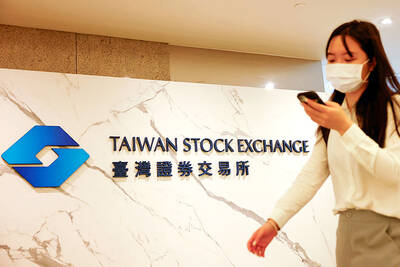New York Life Taiwan (紐約人壽) plans to recruit more than 3,000 agents from rival insurers who are about to be merged, beefing up its current 500-strong team, a top executive said yesterday.
“We would welcome the top 10 percent of those 30,000 to 40,000 [unemployed] agents, who are looking for a home,” Gary Bennett, chief executive officer of the life insurer in Greater China, told a media briefing.
Bennett said that New York Life was committed to the Taiwanese market, which contributed 16 percent to all revenues from Asia last year, and that it would weather the current tough times by strengthening its traditional policy businesses and building a multiple channel via agents, bancassurance and telemarketing.
Chief financial officer Steve Miles said the life insurer saw a 20 percent year-on-year growth in net profits last year in Taiwan. He said health insurance policies were the biggest growth driver, while the company had a strong 260 percent risk-based capital (RBC) ratio.
However, he refused to detail earning figures.
To show its commitment, the insurer announced it would boost its charity outreach programs that support disabled and disadvantaged children by sending employee volunteers to read and tell stories to children and by donating books to children’s groups nationwide in May.
New York Life Taiwan will also sponsor a children’s painting competition from March 16 to April 20 and donate NT$10 to the Maria Social Welfare Foundation for every painting submitted by a child.

The New Taiwan dollar is on the verge of overtaking the yuan as Asia’s best carry-trade target given its lower risk of interest-rate and currency volatility. A strategy of borrowing the New Taiwan dollar to invest in higher-yielding alternatives has generated the second-highest return over the past month among Asian currencies behind the yuan, based on the Sharpe ratio that measures risk-adjusted relative returns. The New Taiwan dollar may soon replace its Chinese peer as the region’s favored carry trade tool, analysts say, citing Beijing’s efforts to support the yuan that can create wild swings in borrowing costs. In contrast,

Nvidia Corp’s demand for advanced packaging from Taiwan Semiconductor Manufacturing Co (TSMC, 台積電) remains strong though the kind of technology it needs is changing, Nvidia CEO Jensen Huang (黃仁勳) said yesterday, after he was asked whether the company was cutting orders. Nvidia’s most advanced artificial intelligence (AI) chip, Blackwell, consists of multiple chips glued together using a complex chip-on-wafer-on-substrate (CoWoS) advanced packaging technology offered by TSMC, Nvidia’s main contract chipmaker. “As we move into Blackwell, we will use largely CoWoS-L. Of course, we’re still manufacturing Hopper, and Hopper will use CowoS-S. We will also transition the CoWoS-S capacity to CoWos-L,” Huang said

VERTICAL INTEGRATION: The US fabless company’s acquisition of the data center manufacturer would not affect market competition, the Fair Trade Commission said The Fair Trade Commission has approved Advanced Micro Devices Inc’s (AMD) bid to fully acquire ZT International Group Inc for US$4.9 billion, saying it would not hamper market competition. As AMD is a fabless company that designs central processing units (CPUs) used in consumer electronics and servers, while ZT is a data center manufacturer, the vertical integration would not affect market competition, the commission said in a statement yesterday. ZT counts hyperscalers such as Microsoft Corp, Amazon.com Inc and Google among its major clients and plays a minor role in deciding the specifications of data centers, given the strong bargaining power of

TARIFF SURGE: The strong performance could be attributed to the growing artificial intelligence device market and mass orders ahead of potential US tariffs, analysts said The combined revenue of companies listed on the Taiwan Stock Exchange and the Taipei Exchange for the whole of last year totaled NT$44.66 trillion (US$1.35 trillion), up 12.8 percent year-on-year and hit a record high, data compiled by investment consulting firm CMoney showed on Saturday. The result came after listed firms reported a 23.92 percent annual increase in combined revenue for last month at NT$4.1 trillion, the second-highest for the month of December on record, and posted a 15.63 percent rise in combined revenue for the December quarter at NT$12.25 billion, the highest quarterly figure ever, the data showed. Analysts attributed the